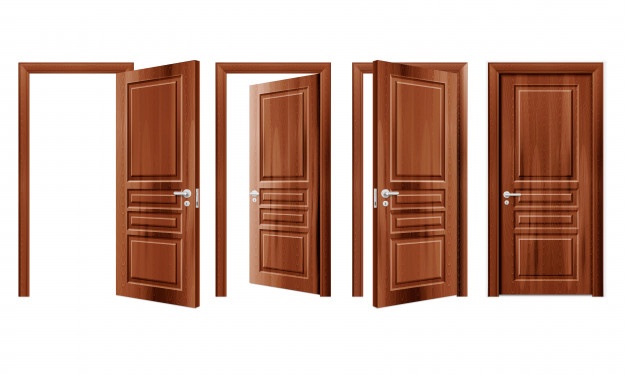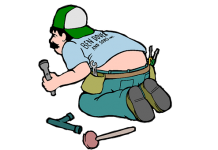You may notice that your door becomes bigger in humid conditions and contracts in dry air. This is the reason entry and bathroom doors often have the tightest fit in your home.
One of the most frustrating things that can happen at home is when your internal doors swell and refuse to be closed. Because most homes this problem can quickly get out of hand unless you try and treat the source of the problem.
Why wood doors swell?
Excessive moisture and insufficient water-repellent finish is a combination you should avoid no matter what. Moisture can get into the wood, especially on the door’s bottom edge, when it isn’t properly sealed or finished.
Other factors that influence this issue is the placement of doors and the location of your home. Doors located at the southern and western areas are more exposed to sun, which compromises their finish. Without sufficient protection, it wouldn’t take long for these doors to start swelling.
Humidity caused by seasonal changes
It’s quite common in the summer for doors to swell and start sticking as the humidity levels increase outside. As wood is a natural substance, it can absorb this excess moisture in the air and this causes the door to scrape along the floor or at other points in the frame. Similarly, if there is a period of heavy rainfall, this extra moisture in the air can also be absorbed, which means that depending on where you live you could suffer from this issue all year long, not just once a year.
Damp issues in the home
Our homes can sometimes suffer from damp or condensation build-up, which can be attributed to many things – poor insulation, drying clothes indoors, not ventilating the rooms, leaving the bathroom door open after a shower to let steam escape, or suffering from rising damp. These issues can have a knock-on effect, such as causing mildew build-up, a musty smell and of course causing doors to swell and stick.
Other causes of sticking doors
In some cases, internal wood doors may be misbehaving due to other factors, like being poorly fitted, to begin with, hinges being too tight or too loose or starting to wear completely, or if you have painted or varnished the door and there are clumps of paint sticking to the edges this can prevent the door from closing properly.
How to Prevent Swelling
Thankfully, you don’t have to live with this nuisance, as there are lots of ways to solve problems with sticking, swollen doors:
- Don’t shave any wood off the door – this should be a last resort, especially if the issue is caused by seasonal changes as when the weather turns colder the door will contract again and then you’ll have a gap around the door which will let in draughts.
- Doors can become harder to operate due to sticking paint. Make sure that your doors aren’t sticking due to sealant or paint. Sanding the sticky areas of the door should do the trick for this issue.
- Reducing indoor humidity can help in preventing wood doors from swelling. Open your windows, or turn on your exhaust while cooking or showering. In some cases, refinishing the door fixes the problem. Always follow the manufacturer’s recommendation when applying a new finish. Moreover, some doors are just beyond repair and would have to be replaced.
- Varnish the doors, so it creates a protective seal and a tougher exterior and prevents the moisture from being absorbed as easily by the wood.
- For a quick fix, use a hairdryer to blast some heat around the area which is sticking and evaporate the moisture to allow you to close the door.
- If your home suffers from persistent damp problems, a dehumidifier might be a sensible investment to control excess moisture in your home.
- Rub a candle or soap along the edges to help lubricate it slightly to make it easier to close.














